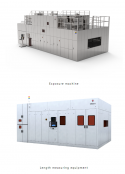CONTINUED...
Processing oriented
The next salvo is likely to be a strengthening and widening of the new export rules. The fdprs on chips focus on two factors: processing power and the speed at which they communicate with other chips. Although in theory Chinese firms could get around these twin restrictions by using lots of less sophisticated chips, that would make it very cumbersome and expensive to train large ai models. But the performance of chips is always improving, and algorithms used for training are becoming more efficient. This means that the sanctions will gradually lose their potency, as more can be done with less.
Such advances may prompt America to modify its sanctions on chips, says Bill Drexel of the Centre for a New American Security (cnas), a think-tank in Washington. It might choose to focus purely on the computational power of chips. This is a simpler approach than trying to find a “sweet spot between computing power and interconnect bandwidth”, says Mr Drexel. But it would entail broadening the restrictions to less powerful chips. That could ensnare the graphics-processing units used in the video-games industry, a rapidly growing market worth $40bn last year. Both American chipmakers and their Chinese customers would suffer.
The commerce department might also target other industries with fdprs. Chinese biopharmaceuticals, an industry with projected sales of more than $100bn by 2025, are highly dependent on American intellectual property. American firms supply lots of biological materials, technical information and lab equipment to Chinese facilities which produce new medicines and therapies, notes Ajay Kuntamukkala of Hogan Lovells, a law firm. Some of these exchanges could be banned. One possible target is American-developed software that Chinese companies use to make medicines that are then exported back to America. Many companies in the West also export data to China in order to develop new treatments. In future, such transfers of data could also be restricted, notes Emily Benson at csis, another think-tank.
Another option the American government is weighing is an expansion of fdprs on companies. The test case for this is Huawei, which continues to operate despite an array of American sanctions. One of its subsidiaries, Kunpeng, makes servers used in data centres and licenses its designs for central processing units (cpus) to several Chinese tech firms. Those groups are still able to buy kit from Intel and amd, two American companies, and chipsets from tsmc, a Taiwanese chipmaker. But America could add these Huawei suppliers to the “entity list” of blacklisted firms, impeding the expansion of Huawei’s data centres.
Other big Chinese conglomerates with global holdings could also get dragged into the fight. In early March America’s Department of Agriculture announced it would form a working group to promote fair competition in the seed industry. The value of bonds issued by Sinochem, a Chinese agro-industrial group, fell on the announcement, owing to fears that the new body could recommend restrictions on its seeds. This is a frightening prospect for China Inc, which has spent years acquiring technologies overseas and, more recently, bringing intellectual property to America and Europe. Sanctions against Sinochem could devastate the operations of Syngenta, a Swiss agribusiness giant that it bought in 2017 for $43bn.
Some industries in Mr Sullivan’s sights will be hard to injure with fdprs. China’s nascent quantum-computing firms, for instance, rely very little on American-made equipment or intellectual property. But Chinese researchers in the field do collaborate energetically with their American counterparts. American quantum-computing specialists write more papers with Chinese ones than with people from any other foreign country, notes Edward Parker, a scientist at the rand Corporation, an American think-tank. Hence the significance of another of the commerce department’s munitions: “deemed export” controls, which prohibit the disclosure of certain types of technical information to foreign nationals, even on American soil.
America may also place limits on capital flows in its attempt to stifle certain Chinese industries. It is already illegal for American people or companies to provide funding to firms suspected of close ties to China’s armed forces. But American financial sanctions could get much fiercer. The Treasury is unlikely to try to cut China off from the use of the dollar altogether, as it has Iran, for example—at least unless relations deteriorate much more. But American authorities are trying to refine and develop the use of the dollar as a weapon in international relations. Observers expect the Treasury may soon try to ban the use of dollars to invest in some advanced technologies in China.
All these measures, however, have drawbacks. Barring Americans from collaborating with foreigners in research on quantum computing, for instance, would set back the American industry as well as the Chinese one, by preventing it from recruiting talented foreigners.
By the same token, restricting American investment in Chinese technology would have only a limited effect. The growing hostility between China and America and the closing of China’s borders for nearly three years during the pandemic have already crimped the flow of investment (see chart 2). American money is no longer that important to China’s venture-capital industry, says Alexander Kremer of Picus Capital, an investment group. Anyway, American regulators would struggle to enforce sweeping financial restrictions. Monitoring every dollar fund based in Hong Kong and in offshore havens such as the Cayman Islands is probably beyond them, at least without a massive increase in staff and resources.
And then there are the repercussions for American firms. China’s airlines are reliant on imported planes and parts, many of them American. America could therefore bring aviation in China to a standstill with a sweeping fdpr—a prospect that alarms Chinese officials. But such a move would probably also provoke a crisis at Boeing, a giant American aircraft-maker.



